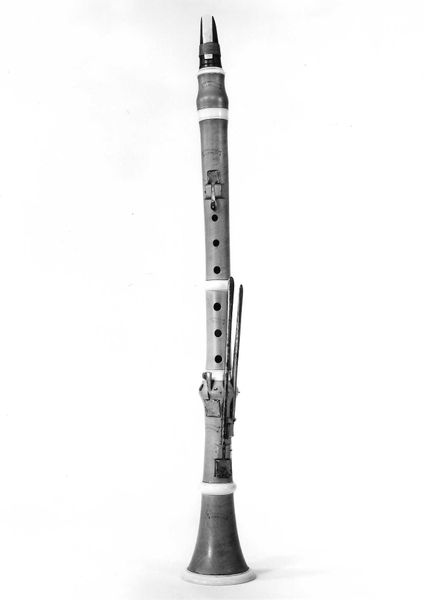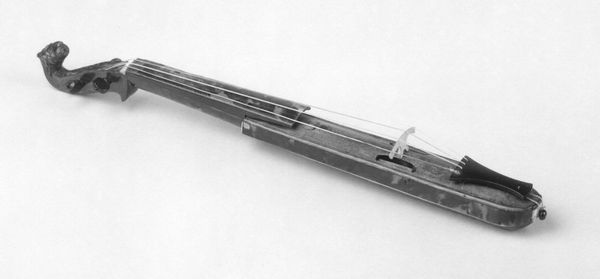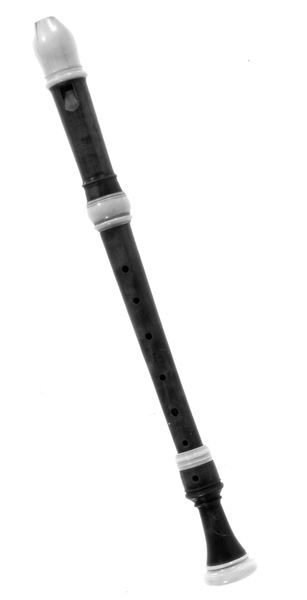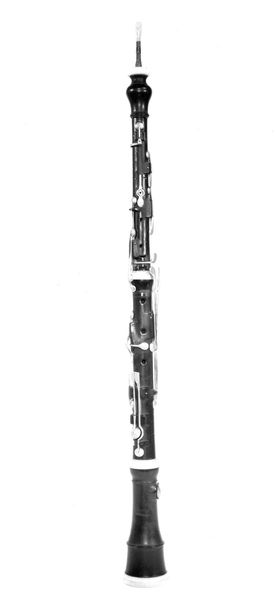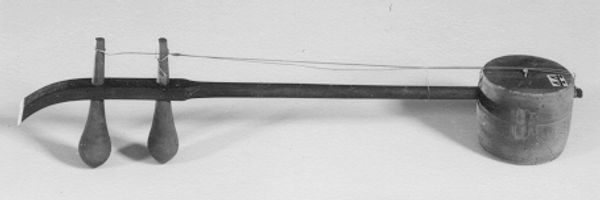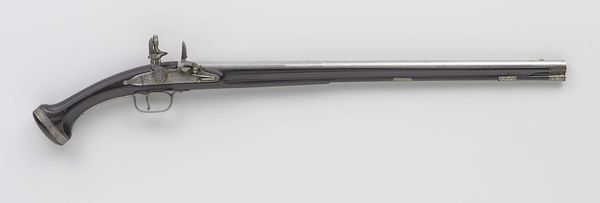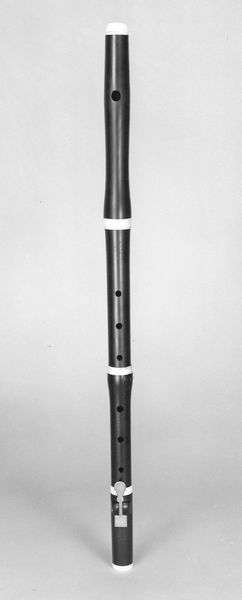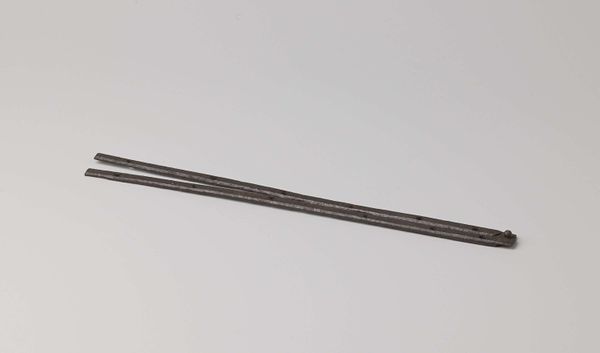
photography
#
sculpture
#
photography
#
musical-instrument
#
monochrome
Dimensions: Length along bore axis 827 mm, Embouchure length along bore axis 745 mm.
Copyright: Public Domain
Curator: What an interesting object this is: it's a transverse flute in A, created sometime between 1811 and 1816, and is currently held at the Metropolitan Museum of Art. It’s an object of remarkable elegance. Editor: Elegance is definitely what springs to mind! Seeing this black-and-white image makes the instrument appear like a phantom artifact. What stories could it tell, do you imagine? Is it the sound it made that speaks, or perhaps how it survived? Curator: Exactly! Flutes have been objects of symbolic importance for millennia. They appear in creation myths across cultures. The sound they make mimics the human voice and they’re used as an object to invite a dialogue with the spirits and natural forces. Editor: I never really considered that aspect of musical instruments before. Thinking about sound as communication with... beyond... gives this piece a kind of emotional weight it didn’t have at first. Almost a kind of lament… What could a transverse flute made at this moment communicate? Curator: In early 19th-century Europe, the flute embodied certain cultural ideals: refinement, artistic expression, a connection to the classical past. The transverse flute—held horizontally—became particularly fashionable among the upper classes. There's a symbolic association with social grace and cultured artistry here. It seems like there might be even further status imbued here through its stark colorlessness. Editor: Right! It feels like we’re gazing upon a shadow of elegance...I wonder who once played this flute. Were they conscious of those social signifiers that it embodied, or did they only concern themselves with its lilting sound and expressive capacities? Perhaps both? What melodies did they pursue? Curator: Perhaps they hoped the music from this flute could give their performance and, in turn, themselves a form of symbolic capital and help build a repertoire or relationship that could yield returns across many years and in numerous situations. It would certainly seem they might, at the very least, signal their sophistication through their command of the instrument. Editor: The thought that some things are just fundamentally unchanged—music’s capacity to carry feelings, instruments’ power to project them into a space and capture us in an instant... I really enjoy the notion that the echo of a particular artist still rings somewhere in this piece today. Curator: Me too. Hopefully we’ve brought listeners closer to this quiet but complex relic. Editor: And who knows, perhaps stirred a little melody from their memory.
Comments
No comments
Be the first to comment and join the conversation on the ultimate creative platform.
